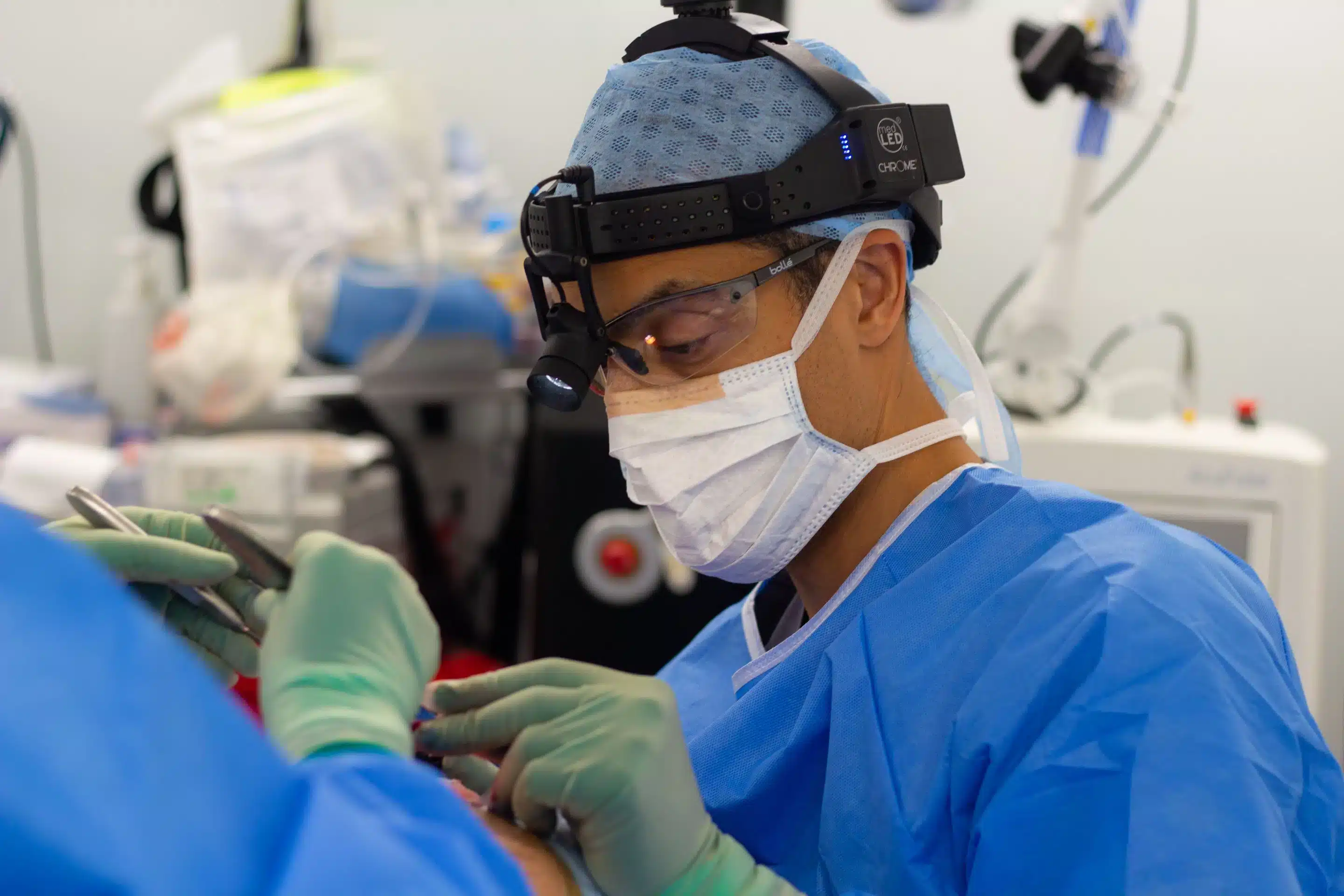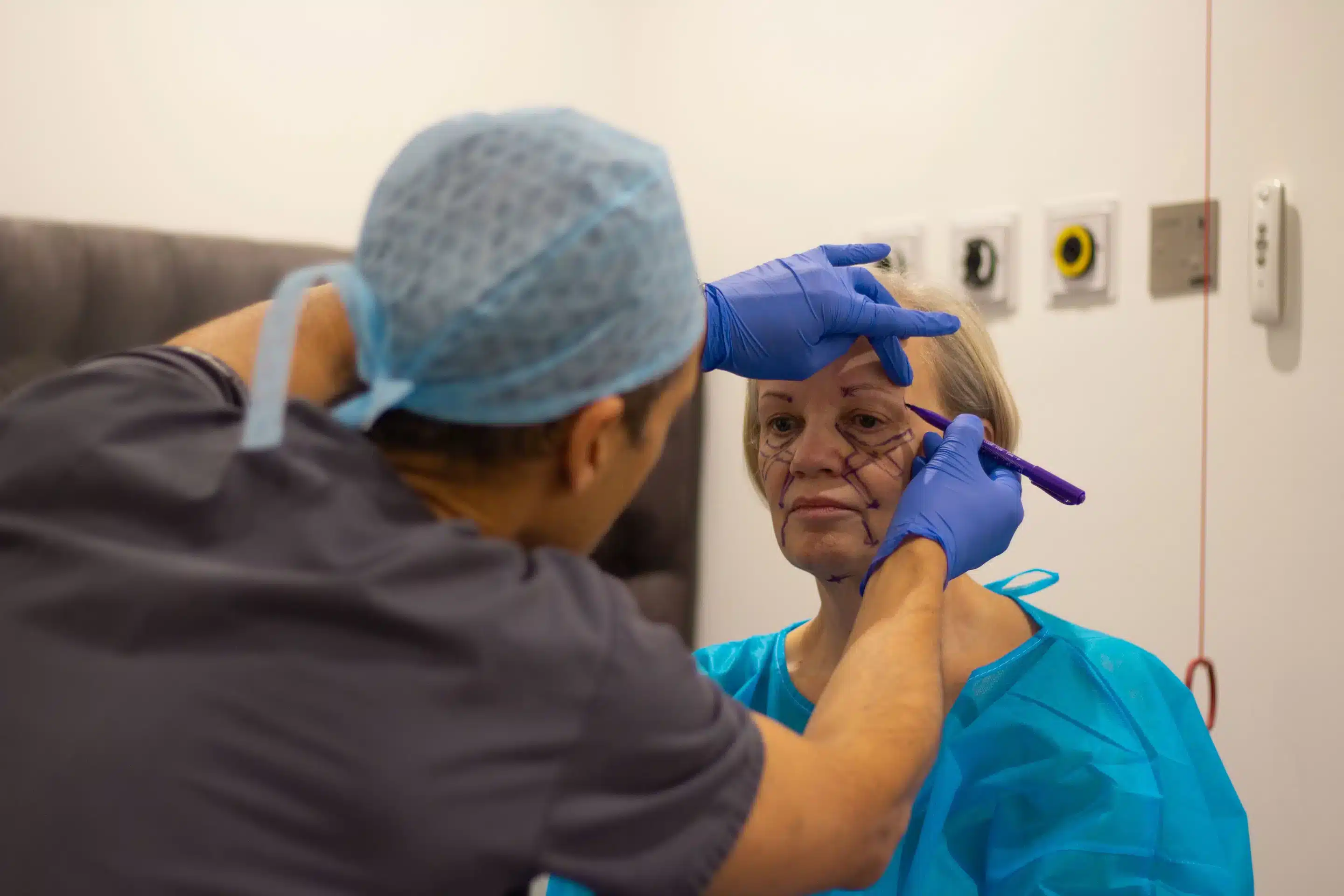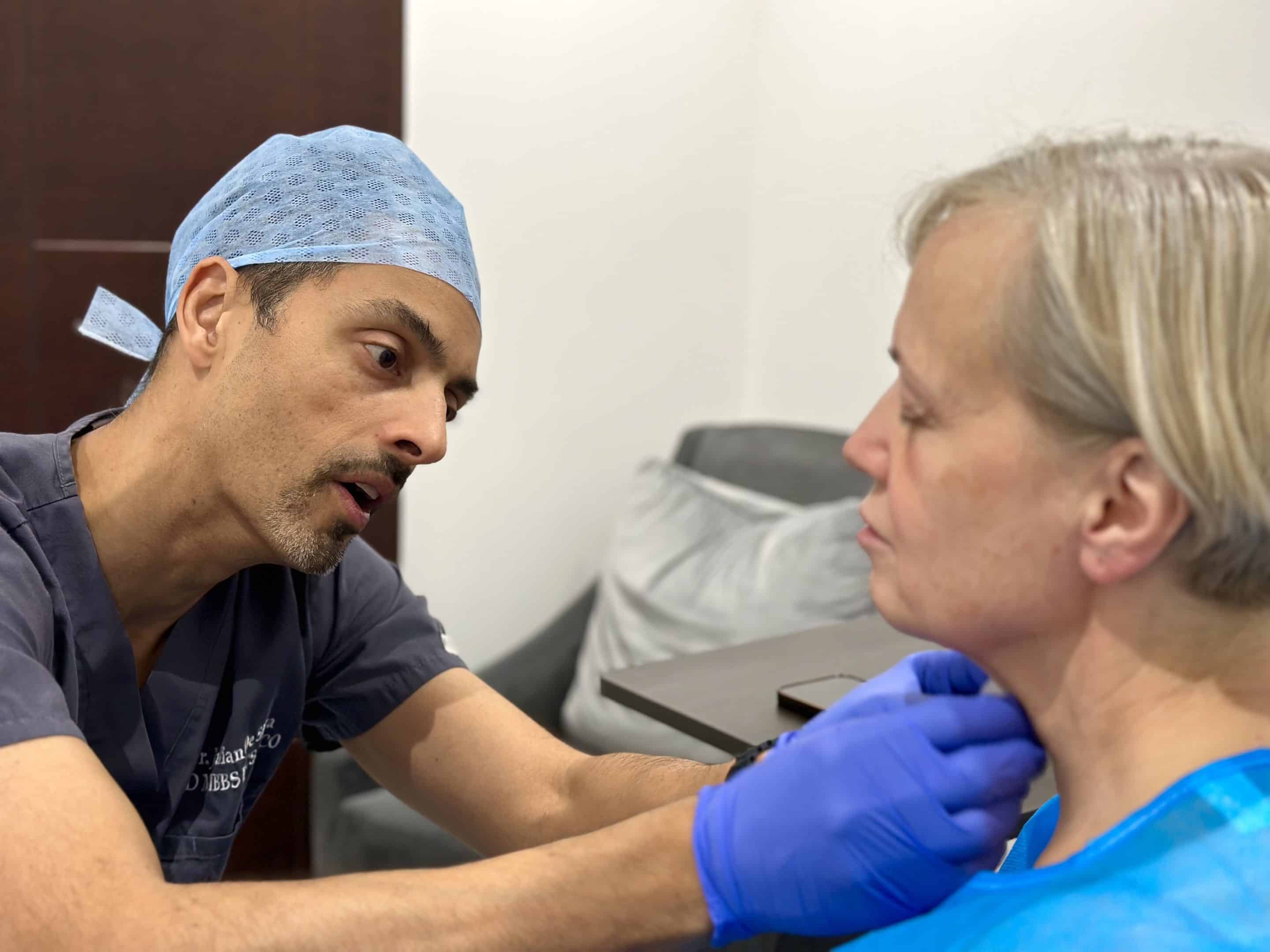
Eyelid drooping, also called ptosis or blepharoptosis, is caused by the eyelid’s edge being lower than normal, the presence of excess baggy skin in the upper eyelid, or a combination of both conditions. The malfunctioning levator muscle, responsible for lifting the eyelid, causes these conditions.
These can affect your appearance and eyesight. Thankfully, congenital ptosis, severe ptosis, age related ptosis, or acquired ptosis can be treated by eyelid ptosis surgery or blepharoplasty.
In this article, I will talk about several options for when your upper eyelids sag. These options include non surgical treatments and eye surgery.
How Do You Fix Droopy Eyelids?

Eyelid surgery, medically known as blepharoplasty or eyelid ptosis surgery, is the universal surgical procedure for addressing the drooping of the eyelids. These sets of surgical techniques target the upper eyelid (upper blepharoplasty), lower eyelid (lower blepharoplasty), or both, aiming to improve the appearance of droopy eyelids.
Be it for cosmetic or functional purposes, this ptosis plastic surgery alters the appearance of the eyelids by removing the excess skin or fat in the region. It helps correct defects and deformities and modifies the eye region aesthetically.
Upper blepharoplasty and lower blepharoplasty are separate sets of operations. The results of the ptosis surgery in your upper eyelid are long-lasting and can last for up to a lifetime. The effects of the surgery on your lower eyelids are essentially permanent.
How Can I Tighten My Eyelids Without Surgery?

While surgery produces the best results for ptosis or droopy eyelids, several nonsurgical options are available to address ptosis.
Droopy eyelid or ptosis treatments generally don’t require downtime, except for laser resurfacing. These options target the skin around your eyes to tighten and smoothen the treatment area, fill the saggy skin on your eyelids, or stimulate your body’s healing process.
Botulinum toxin, more popularly known as anti-wrinkle treatment injections, is one of the most popular non-invasive droopy eyelid treatments. It targets the wrinkles and sagging skin in the treatment area, effectively reducing the appearance of ptosis or droopy eyelids.
These products are injected to correct droopy eyelids or ptosis caused by ageing, which severely weakens the muscles in the eye region. It results in a more youthful look, eliminating unwanted folds and fine lines around the eyes.
Hyaluronic acid-based dermal fillers are products used to fill the volume around the cheeks and the lower eyelid area. It removes the depth of circles under the eyes caused by eye bags, giving a more refreshed appearance.
These treatments typically require additional sessions to maintain their effects, which fixes the fluid buildup and unsightly contours that form over multiple injections in the eye region. They are often paired with other nonsurgical options to achieve the best results.
Laser resurfacing is also a non-invasive ptosis treatment that softens and smoothens wrinkles and fine lines by targeting the upper skin cells to stimulate the formation of new ones. The younger skin cells produced from the healing process are smoother and can help lessen droopy eyelids in the process.
Finally, certain medications and prescription eye drops can also help reduce droopy eyelids without undergoing surgery. These options require professional medical advice, so it’s best to consult a doctor before opting for these alternative ptosis treatments.
What Causes Your Eyelids to Droop?

Ageing
The most common cause of ptosis is ageing. Our body reduces collagen and elastin production as we age, which impacts the elasticity of our skin and its appearance over time. As a result, the eyelid droops.
While the signs of ageing can be reduced, it’s up to the person whether they want to address them for cosmetic purposes. However, for some people, it can obstruct eyesight and affect their everyday lives when the eyelids are not positioned lower than usual.
Genetics
Genetics plays an essential role in how your eye region is formed. If your parents have prominent ptosis, you are most likely to acquire these physical traits. As such, while older patients tend to be more vulnerable to this condition, younger people can manifest symptoms of droopy eyelids early in their lives due to their genes.
Excess Skin on the Upper Eyelid
Extra skin on the upper eyelid can cause them to droop. It makes wrinkles and creases more prominent with age, which accentuates other skin concerns such as dark circles, bags under the eyes, and ptosis or the weakening of the muscle tissues in this region.
Nerve Damage
A droopy eyelid condition caused by nerve damage is called neurogenic ptosis. When there are problems with the nerve pathways that control the muscle movements in the eyelid region, it causes the upper eyelids to droop and lose shape. The person’s eyesight can be obstructed by this functional concern.
Trauma, Injury
Trauma or injury in the eye region can destroy nerve endings and weaken eyelid muscles, causing them to droop. Droopy eyelid surgery can address this functional issue.
Underlying Medical Condition
Several medical conditions can cause droopy eyelids. In some patients the actual eyelid can be droopy, this is termed ptosis in medical jargon. There are many causes including diabetes, stroke, Myasthenia gravis, Horner syndrome, and tumours, as well as ageing and contact lens wear. An examination in person is required to look at the cause and the treatment is different from blepharoplasty surgery alone.
Droopy Eyelid Symptoms

1. Appearance of the eyelids
The most prominent clue of droopy eyelids is their appearance. The upper eyelid tends to sag and cover parts of the eye. The lower drooping eyelid appears as stretching away from the eyes. These are visible signs of drooping eyelids.
2. Vision problems
People with droopy eyelids would feel a subtle sensation in their upper field of vision as being blocked. Over time, when the upper eyelid drops further and covers part of the pupil, it may completely block eyesight.
3. Fatigue and pain in the eye region
Droopy eyelids can cause fatigue, mild pain, and discomfort in the eye region. It’s a consequence of the vision being slowly blocked by the sagging eyelids. People who suffer from this condition can expect increasingly teary eyes paired with dryness.
4. Unusual behaviour
People with droopy eyelids and weak muscles are more difficult to examine. Symptoms typically do not appear in early childhood unless genetics plays a key role in its cause. However, some behavioural changes can be observed when their vision is affected, and no visible signs are present for adults to notice.
Those who have droopy eyelids at a young age usually tip their heads back to improve their vision under the eyelid muscle. When the person complains about vision issues in their upper field of vision, it may be a sign of eyelid sagging.
Book a Consultation
Are you looking for a doctor that can lift your eyelids and eyebrows without having to go under the knife? I, Dr. Julian De Silva can help.
As one of the best cosmetic doctors in the UK, most patients come to me to invigorate their eye area through a personalised procedure.
If you want to enjoy the benefits of the said procedure, book a consultation with me now!





